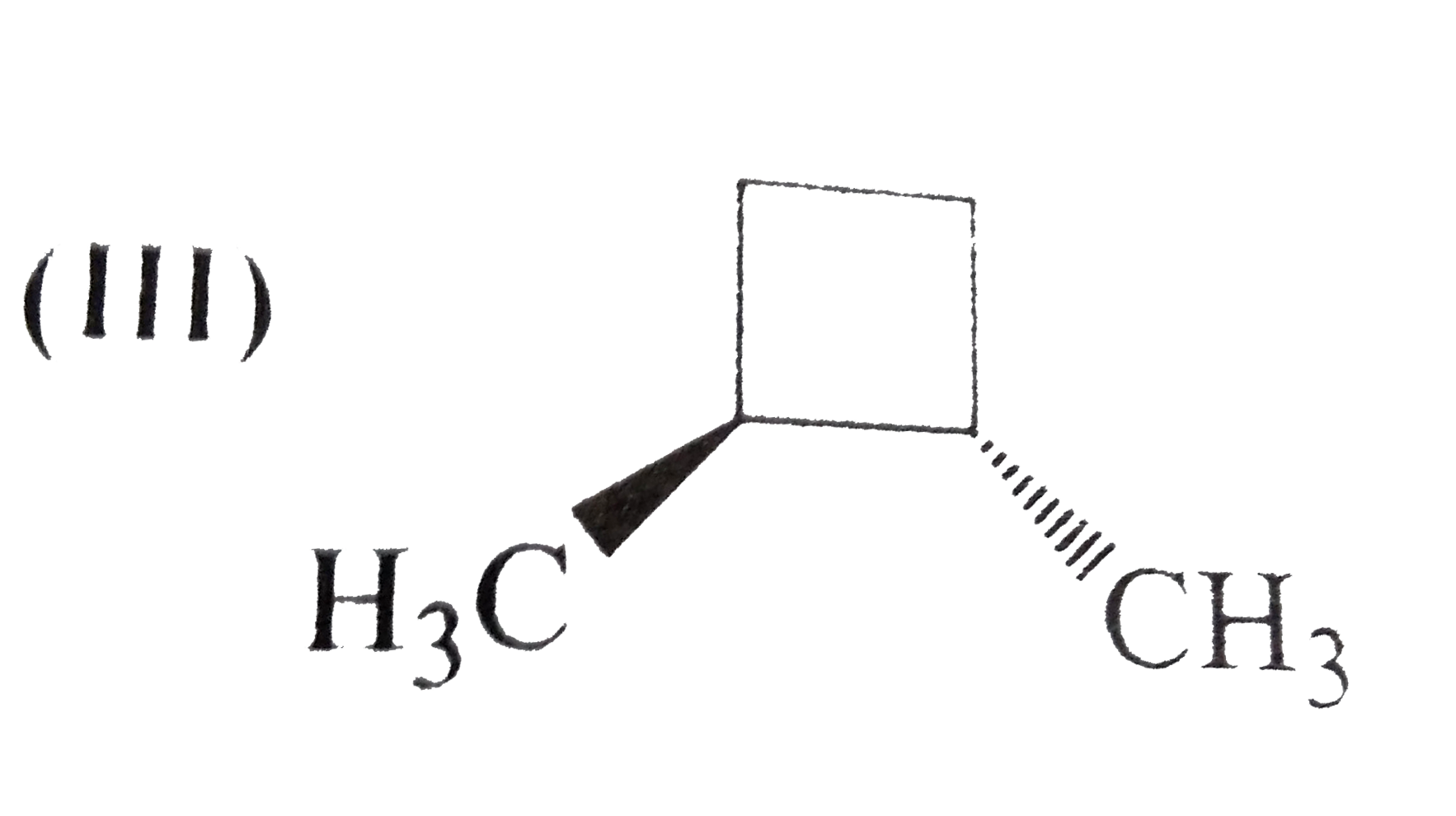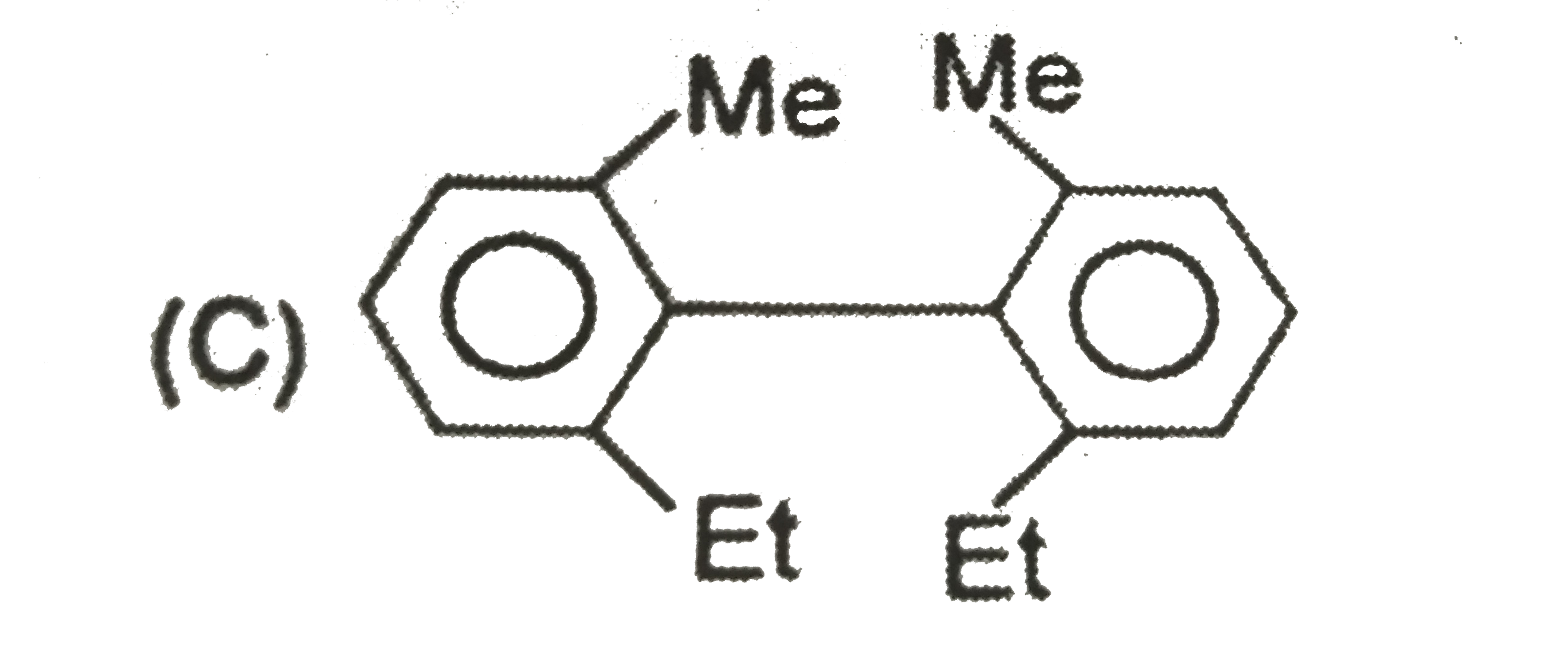Out of the following which are chiral ?




The correct Answer is:B,C
To determine which compounds are chiral from the given options, we need to analyze each compound based on the presence of a plane of symmetry (POS) and the uniqueness of the groups attached to the chiral centers. Here’s a step-by-step solution:
Step 1: Understand Chirality
Chirality refers to a property of a molecule that is not superimposable on its mirror image. A compound is chiral if it has at least one carbon atom bonded to four different groups (a chiral center) or if it lacks a plane of symmetry.
Step 2: Analyze Each Compound
Let's denote the compounds as A, B, C, and D.
Compound A:
- Observation: There are two CH3 groups, one above the plane and one below.
- Analysis: Since both CH3 groups are identical, a plane can be drawn that divides the molecule symmetrically, indicating the presence of a plane of symmetry.
- Conclusion: Compound A is not chiral.
Compound B:
- Observation: The groups attached to the central carbon are different (e.g., CH3, Cl, etc.).
- Analysis: No plane of symmetry can be drawn that divides the molecule into two identical halves. The groups are arranged in such a way that they do not mirror each other.
- Conclusion: Compound B is chiral.
Compound C:
- Observation: Similar to compound B, the groups attached are different.
- Analysis: A plane cannot be drawn that divides the molecule symmetrically. The arrangement of groups does not allow for a mirror image.
- Conclusion: Compound C is chiral.
Compound D:
- Observation: The groups are arranged such that they can be mirrored.
- Analysis: A plane can be drawn that divides the molecule symmetrically, indicating the presence of a plane of symmetry.
- Conclusion: Compound D is not chiral.
Final Answer:
The chiral compounds among the options are B and C.
---
Chirality refers to a property of a molecule that is not superimposable on its mirror image. A compound is chiral if it has at least one carbon atom bonded to four different groups (a chiral center) or if it lacks a plane of symmetry.
Let's denote the compounds as A, B, C, and D.
- Observation: There are two CH3 groups, one above the plane and one below.
- Analysis: Since both CH3 groups are identical, a plane can be drawn that divides the molecule symmetrically, indicating the presence of a plane of symmetry.
- Conclusion: Compound A is not chiral.
- Observation: The groups attached to the central carbon are different (e.g., CH3, Cl, etc.).
- Analysis: No plane of symmetry can be drawn that divides the molecule into two identical halves. The groups are arranged in such a way that they do not mirror each other.
- Conclusion: Compound B is chiral.
- Observation: Similar to compound B, the groups attached are different.
- Analysis: A plane cannot be drawn that divides the molecule symmetrically. The arrangement of groups does not allow for a mirror image.
- Conclusion: Compound C is chiral.
- Observation: The groups are arranged such that they can be mirrored.
- Analysis: A plane can be drawn that divides the molecule symmetrically, indicating the presence of a plane of symmetry.
- Conclusion: Compound D is not chiral.
The chiral compounds among the options are B and C.
Topper's Solved these Questions
- ISOMERISMBOOK - HIMANSHU PANDEYCHAPTER - ISOMERISMEXERCISE - Level 2 (Q.1 To Q.25)
25 Videos
- ISOMERISMBOOK - HIMANSHU PANDEYCHAPTER - ISOMERISMEXERCISE - Level 2 (Q.26 To Q.50)
25 Videos
- ISOMERISMBOOK - HIMANSHU PANDEYCHAPTER - ISOMERISMEXERCISE - Subjective Type Problems
11 Videos
- HALIDESBOOK - HIMANSHU PANDEYCHAPTER - HALIDESEXERCISE - Subjective Type Problems
10 Videos
- NOMENCLATUREBOOK - HIMANSHU PANDEYCHAPTER - NOMENCLATUREEXERCISE - Section Iv (Q.26 To Q.26)
1 Videos
Similar Questions
Knowledge Check
Which of the following is/are chiral?
ACeling fanBHockey stickCScrewDKid's tricyleWhich of the following is/are chiral?
A B
B C
C D
D
Which of the following molecules are chiral ?
 AI,II,III and IVBII,III and IVCII and IVDI and II
AI,II,III and IVBII,III and IVCII and IVDI and II

